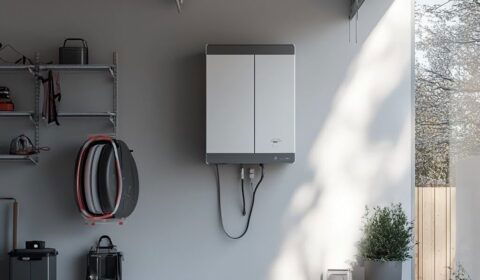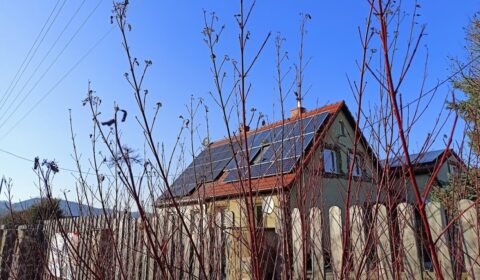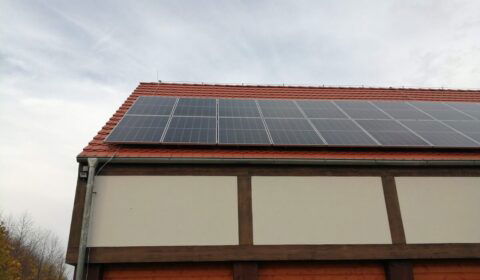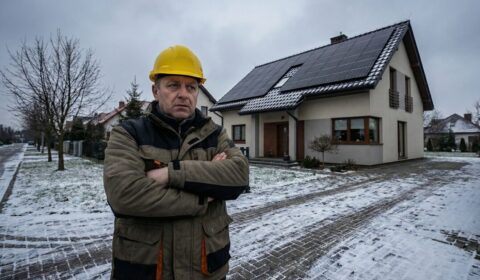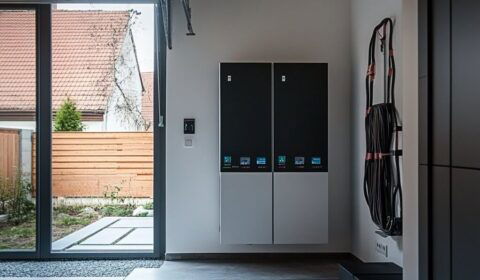"Europa może oszczędzać do 33 mld euro rocznie dzięki importowi energii słonecznej z Płn. Afryki"
Desert renewables plan 'would cut EU’s power bill by $42bn’
Europe would save €33bn ($41.9bn) a year on its power bill by 2050 by moving towards the bulk importation of renewable power from the Middle East and North Africa (MENA), a new study claims.
Under such a system, the EU and MENA regions would collectively source more than 90% of their electricity from renewables. The MENA area would acquire an export industry worth €63bn a year – more than the current exports of Egypt and Morocco combined.
The report, published by the Desertec Industrial Initiative (DII) in conjunction with Germany’s Fraunhofer Institute, makes two large assumptions.
The first is that both the EU and MENA will “fully optimise” their renewables potentials by 2050, regardless of whether the Desertec programme goes ahead.
The second is that the tinderbox politics of MENA countries do not raise investment costs, nor make the EU nervous about having to rely on the region for a significant fraction of its future electricity supply.
That second assumption, in particular, would seem to be a stretch given recent events in the region.
Speaking to Recharge, officials in Germany recently expressed deep reservations about the investment case for DII, given the political volatility since the “Arab Spring” in late 2010.
The report nevertheless presents a detailed and compelling case that DII’s vision is both “technically possible and economically viable”.
The study finds that by 2050 – assuming the EU had maximised its renewables potential at home – each MWh would cost Europeans about €73.
By comparison, each MWh of clean electricity imported from a MENA region that had fully embraced renewables would cost just €58.
The cost savings is broken down into two, roughly equal, elements.
The first part stems from the direct cost-advantage of producing renewable electricity in the desert. In addition to its vastly superior solar resource (as well as cheap land and labour), North Africa also boasts exceptional wind conditions – particularly along Morocco’s Atlantic coast and along the Red Sea.
In theory, this aspect should be the easiest win for DII, as it presents an obvious business case for investors.
The second element of the cost savings stems from the EU being part of a much larger energy system, making it easier to balance the output of solar and wind plants.
Such a system, stretching from Saudi Arabia in the east to the UK in the west, would require fewer gas peaking plants as back-up, and would be more capable of soaking up excess production by wind and solar plants – a situation that currently leads to expensive curtailment in closed energy markets like Ireland.
This aspect, DII acknowledges, will be a tougher nut to crack, as it is difficult for the market alone to address issues of systemic importance. That reality is illustrated by the difficulty the EU faces in getting the necessary grid infrastructure built for its planned renewables expansion.
DII’s plan calls for seven high-voltage interconnectors to be laid beneath the Mediterranean, and an eighth bringing power from Egypt and Saudi Arabia up to Turkey.
Roughly half of the system’s total power would come from wind – mostly onshore – with another 25% to come from PV and concentrating solar power, 9% from gas, and the remainder from other renewables.
The plan singles out several future “super producers”, including Norway and the Maghreb, which due to their low populations and high renewables resource, would need to be huge exporters.
A number of other countries would produce and consume in roughly the same proportion, including the UK, Spain, Saudi Arabia and Egypt.
Others still, most notably Germany, France, Italy and Turkey, would essentially play the role of “super importers”, given their relatively limited resources and high populations.
DII, whose membership includes the likes of E.ON, Enel, Siemens, Morgan Stanley, Deutsche Bank and Shell, is preparing to build “reference projects” totaling 2.5GW across Morocco, Algeria and Tunisia, with some money likely to come from the World Bank.
The first power from a solar project in Morocco is expected in 2014.





























